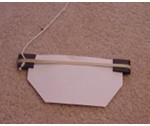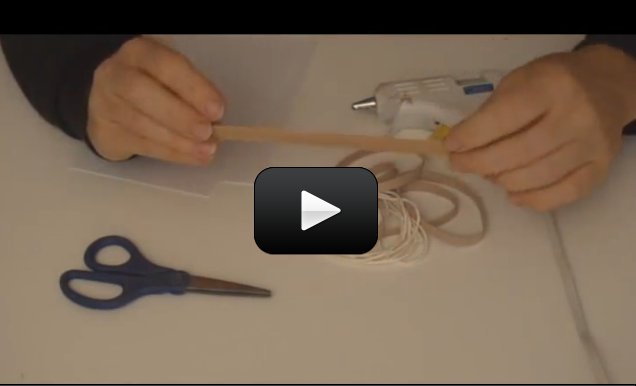 Sound is everywhere. It can travel through solids, liquids, and gases, but it does so at different speeds. It can rustle through trees at 770 MPH (miles per hour), echo through the ocean at 3,270 MPH, and resonate through solid rock at 8,600 MPH.
Sound is everywhere. It can travel through solids, liquids, and gases, but it does so at different speeds. It can rustle through trees at 770 MPH (miles per hour), echo through the ocean at 3,270 MPH, and resonate through solid rock at 8,600 MPH.
Sound is made by things vibrating back and forth, whether it’s a guitar string, drum head, or clarinet. The back and forth motion of an object (like the drum head) creates a sound wave in the air that looks a lot like a ripple in a pond after you throw a rock in. It radiates outward, vibrating it’s neighboring air molecules until they are moving around, too. This chain reaction keeps happening until it reaches your ears, where your “sound detectors” pick up the vibration and works with your brain to turn it into sound.
You can illustrate this principle using a guitar string – when you pluck the string, your ears pick up a sound. If you have extra rubber bands, wrap them around an open shoebox to make a shoebox guitar. You can also cut a hole in the lid (image left) and use wooden pencils to lift the rubber band off the surface of the shoebox.
Please login or register to read the rest of this content.


yes we got it to work, awesome project
Yes that’s correct! Have you ever played with a guitar string? By changing the tension and length of the string, you will get different sounds. Longer strings vibrate more slowly and have lower pitched sounds. Try strumming rubber bands wrapped around a tissue box (strum the part of the bands that go across the open hole) and vary the tension in the bands and see how it affects the sound. You can also tape string across the opening instead of rubber bands, too!
Aurora,
When we change the length of the string the sound changes. It goes higher with more string and lower with less string. Is this correct? Can you explain why this happens in this experiment? Thank you.
Yes you are right – I’ll get that posted right away. Sorry for the omission!
Love the idea! Do suugest that you put the materials list up in the notes as with other experiments for easy planning 🙂 Thank you! Can’t wait to try it!
Sure – what did you have in mind? Take a look at the project and see what you could substitute that is strong and lightweight and flat.
Can we use something Instead of a popsicle stick? Emma
love the new work sheets and that it is by grade level!
The rubber band must be lifted off a bit from the popsicle stick, which is why there are bumpers on each end for the rubber band to go over. Does that help?
love it made 2 z 😀
I’m having trouble making my hornet buzz. Did I miss a step? ( I did put the rubber band around the popsickle stick. )
whoa! Thats pretty cool! It also gives a lovaly prank to do while your friend is near a beehive…. =]
Awesome! So incredibly easy and so fun to play with!
Look like our server had a hiccup. Go ahead and try again.
Hi,
The video is not coming up. The YouTube videos and the rest of your site is coming up just fine. Currently able to play videos from other sites this afternoon. I have tried new sessions by way of IE8, Firefox, and Chrome.
THIS IS SO AWESOME! I never thought it would work! My brother did it TOTALLY by himself.
sevy keble 🙂
Veronica Cable write: “Aurora do you come up with all these experiments yourself?”
I wish I could say that I did, but actually these projects are culmination of projects from over the years of working with kids. Some projects are so classic, no one really knows who came up with them first, and others are “Aurora Originals”… but I can say that ALL projects have been performed and tested by myself along with thousands of kids, so we know you’re going to love them! If you want to know a secret, I get most of my crazy ideas from watching how the kids play with the equipment, so my great ideas really come from you! 🙂
COOL AND EASY.
Cool experiment. I have been having this question in my brain for a long time and I did not know where to post it. So here it is: Aurora do you come up with all these experiments yourself?